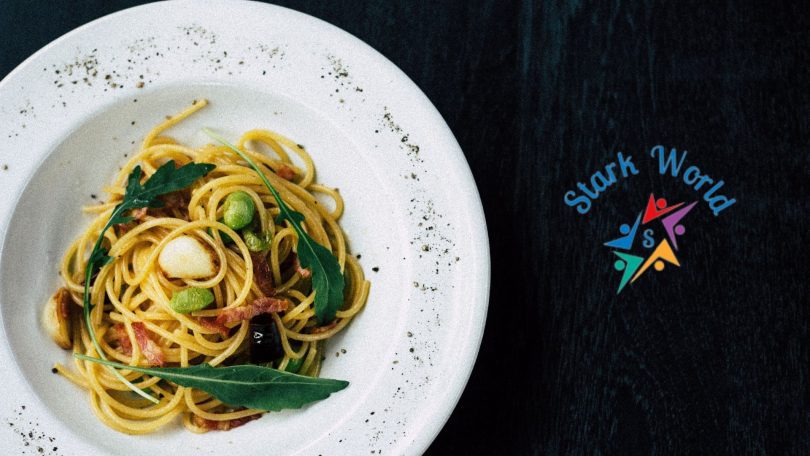Has the thought of making your pasta ever crossed your mind? If that is the case, then you are about to experience something enjoyable or beneficial. This guide will provide you with a simple recipe to make fresh, homemade pasta right in your kitchen. Enjoy the satisfaction of crafting your pasta from scratch without the need for expensive equipment or hard-to-find ingredients—simply follow our steps.
The Joy of Homemade Pasta
There’s a certain magic that happens when you transform simple ingredients like flour and eggs into a plate of fresh pasta. Engaging in the process can be therapeutic and bring a sense of accomplishment. But more importantly, the taste of homemade pasta is incomparable to store-bought ones. It’s tender yet chewy, and it absorbs sauces better, leading to a richer and more flavorful dish.
Benefits of Making Your Pasta
Making your pasta has numerous benefits. First, it’s healthier. You control what goes into your pasta, avoiding preservatives or additives often found in store-bought brands. Second, it’s cost-effective. Basic pasta ingredients are inexpensive and readily available. Lastly, making pasta can become a fun family activity that not only produces a delicious meal but also creates memories.
Ingredients and Equipment
Basic Pasta Ingredients
The beauty of pasta lies in its simplicity. All you need is all-purpose flour, eggs, a pinch of salt, and a dash of olive oil. These basic ingredients, when combined, create a versatile dough that can be shaped into various forms of pasta.
Optional Additions for Flavor
If you wish to experiment, there are numerous additions you can incorporate into the dough for added flavor. Adding herbs, spices, vegetable purees, or squid ink can give your pasta a unique twist.
Essential Pasta-Making Tools
While special tools like pasta machines or ravioli stamps can make the process easier, they are not mandatory. A rolling pin, a sharp knife or pizza cutter, and a fork are enough to create basic pasta shapes. If you decide to dive deeper into the world of pasta making, a pasta drying rack can also be useful.
Step-by-Step Instructions
Step 1: Mixing the Dough
In a large bowl, combine the flour and salt; then make a well in the center and crack the eggs into it. Add the olive oil. Using a fork, start incorporating the flour into the egg mixture until it starts to form a dough. Once it’s too hard to mix with the fork, use your hands to bring the dough together.
Step 2: Kneading the Dough
Once you finish mixing the dough, transfer it to a floured surface and knead for about 10 minutes. The objective is to enhance the gluten in the flour, resulting in the desired chewy texture for your pasta. Ensure the dough becomes smooth and elastic; if it feels overly sticky, incorporate a bit more flour until you achieve the desired consistency.
Step 3: Resting the Dough
Following the shaping of the dough, wrap it in plastic and let it rest for a minimum of 30 minutes. This resting interval promotes the relaxation of gluten, resulting in a more pliable and easily rollable dough.
Step 4: Rolling the Dough
After resting, divide the dough into four pieces. Work with one piece at a time, keeping the rest covered to prevent drying out. Using a rolling pin, roll out the dough as thin as you can without it tearing. The goal is to achieve a translucent sheet of pasta.
Step 5: Shaping the Pasta
Now comes the fun part – shaping! For simple shapes like fettuccine or spaghetti, just roll the sheet up loosely and slice it into thin strips with a sharp knife. Unroll the strips and there you have it – pasta! For more complex shapes, additional tools or techniques may be necessary.
Cooking and Serving Your Homemade Pasta
Step 6: Boiling the Pasta
Fresh pasta cooks much faster than dried store-bought pasta, often in just 2-3 minutes. Bring a salted large pot of water to boil. Add pasta and stir gently to prevent sticking. Cook until the pasta is al dente – tender but still firm to the biteStep 6: Cooking the Pasta
Once the water is boiling, carefully add your homemade pasta. Stir gently to prevent sticking and cook until the pasta is al dente. This usually takes around 2-3 minutes for fresh pasta, but it’s best to taste a piece to ensure it’s cooked to your preference.
Step 7: Draining the Pasta
Using a slotted spoon or a pasta strainer, carefully remove the pasta from the boiling water and drain well. Shake off any excess water before transferring the pasta to a serving bowl or plate.
Step 8: Serving the Pasta
Now that your homemade pasta is cooked and drained, it’s ready to be served. You have the option to mix it with your preferred sauce, such as marinara, pesto, or Alfredo. Add some grated Parmesan cheese and fresh herbs for extra flavor. Alternatively, you can use it in various pasta dishes like lasagna or cannelloni.
Enjoy your homemade pasta!







